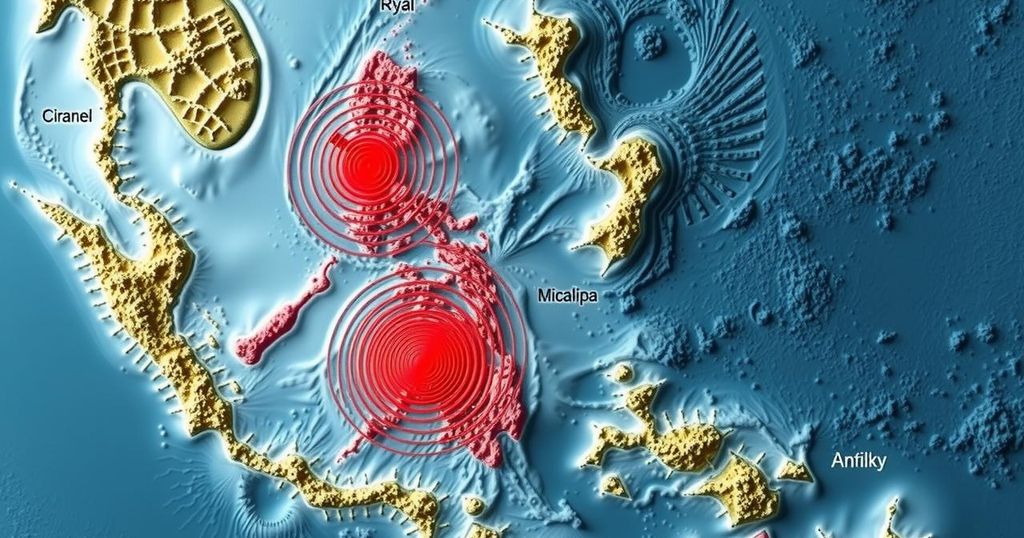A magnitude 5.6 earthquake hit northern Luzon, Philippines, on Monday, confirmed by GFZ. Occurring at a shallow depth of 10 kilometers, it was centered near Bangui, Ilocos Norte. Phivolcs stated no major damage is expected, but residents should be alert for aftershocks. The Philippines remains at risk due to its location on the Pacific Ring of Fire.
On Monday, a magnitude 5.6 earthquake shook northern Luzon, Philippines, as reported by the German Research Centre for Geosciences (GFZ). The seismic event occurred at a shallow depth of 10 kilometers (6.2 miles), with the Philippine Institute of Volcanology and Seismology (Phivolcs) confirming that the quake originated near the town of Bangui, located in Ilocos Norte province.
While Phivolcs indicated that the quake was unlikely to cause major damage, they cautioned residents regarding possible aftershocks. In a statement, Phivolcs stated, “While the quake’s depth was shallow, we are not anticipating any major destruction. However, residents should remain vigilant as aftershocks are a possibility.”
The Philippines is part of the Pacific “Ring of Fire,” a region known for its high seismic and volcanic activity. This geographical positioning renders the nation particularly susceptible to earthquakes and tectonic disturbances, necessitating a comprehensive understanding of its seismic history and future forecasts.
The Philippines, situated along the Pacific Ring of Fire, is a region characterized by frequent earthquakes and volcanic eruptions. This high level of tectonic activity is due to the convergence of multiple tectonic plates, leading to various seismic events. The country’s geological structure and history are integral to understanding the risks and preparedness required for such natural phenomena.
In summary, the recent magnitude 5.6 earthquake that struck northern Luzon serves as a reminder of the Philippines’ vulnerability to seismic activities. Although the Philippine Institute of Volcanology and Seismology has indicated that significant damage is not anticipated, residents are urged to remain alert to the possibility of aftershocks, reflecting the need for continued awareness and preparedness for seismic events in this active region.
Original Source: www.newsx.com






